OSAC Newsletter, April 2017
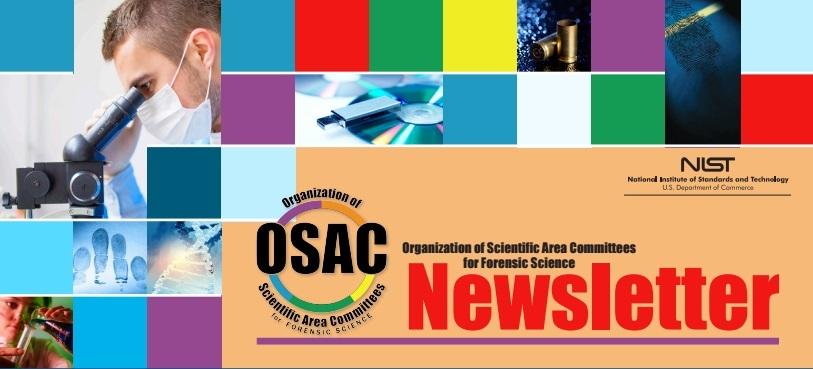
April 2017
Message from the FSSB: Preparations for April 2017 Full OSAC Meeting | Lessons Learned from My NCFS Experience | Message from Mark Stolorow, Director of OSAC Affairs | ISO/IEC 17020 Added to the OSAC Registry | Standards Developing Organization (SDO) News | Status of Standards Documents Recommended for Inclusion on the OSAC Registry | On the Horizon
Message from the FSSB: Preparations for April 2017 Full OSAC Meeting
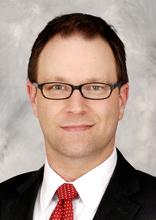
By Jeremy Triplett, Chair of the Forensic Science Standards Board (FSSB).
The Organization of Scientific Area Committee for Forensic Science (OSAC) is preparing for its upcoming full meeting on April 18-21, 2017 in Leesburg, VA. This meeting will be a welcome opportunity for all 568 OSAC members (forensic science practitioners and other experts) and 85 invited guests to continue to collaborate on a forward approach to forensic science. While we will take a moment to celebrate our recent successes related to the OSAC Registry and documents published by standards developing organizations (SDOs), in part due to OSAC contributions, we are really looking forward to addressing some of our biggest and most important standards challenges yet. In addition to the routine meetings of 25 subcommittees, five scientific area committees, three resource committees, and statistician task groups, there will be many interdisciplinary working groups that are focusing on cross-cutting industry standards related to critical concepts such as conclusions, training, statistics, and terminology.
By John M. Butler, Vice-Chair of the National Commission on Forensic Science and SAC Biology/DNA Member
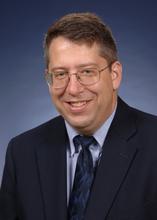
Since its formation more than three years ago, I have had the distinct pleasure of being part of and helping to lead the National Commission on Forensic Science (NCFS). Composed of a diverse set of individuals representing multiple stakeholder perspectives and conducted with transparent and public discussions required under the Federal Advisory Committee Act, the Commission provided a unique forum and national stage to highlight areas needing improvement in forensic science. As has been widely shared in recent news reports, the Department of Justice has announced that the Commission’s charter will not be renewed when it expires on April 23, 2017. In my closing remarks at the 13th and final meeting held on April 10-11, I shared four lessons learned from my experience with the Commission:
Lesson #1: Time and patience are required for a newly organized group to align, pull together, and “gel.”
Lesson #2: Respect and trust involve listening to and seeking to understand the perspectives of others.
Lesson #3: Receiving feedback can be uncomfortable, but in the end, it usually helps improve our efforts.
Lesson #4: The community benefits when a dedicated group works together and is open with its work products.
While the Commission’s closure does not directly impact OSAC continuance, I hope that these lessons learned may provide food for thought since OSAC, like the NCFS, was designed to include multiple stakeholder perspectives to produce more robust work products. Since the services of forensic science laboratories interface with and impact law enforcement, the legal community, and the public, effective communication and collaboration are important to doing our job well.
Message from Mark Stolorow, Director of OSAC Affairs
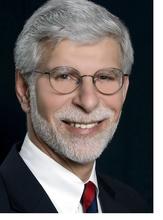
I am delighted and honored that Professor Sylvester James “Jim” Gates has joined our OSAC Forensic Science Standards Board. As a world-class academic research scientist, he is a tremendous addition to our organization. In addition to his long list of achievements and awards for distinction in theoretical physics, including the National Medal of Science awarded to him by President Barack Obama, Professor Gates also happens to be gifted with eloquence and a knack for explaining complex matters in plain language. Having known Professor Gates for four years, I have come to admire his penetrating analysis and incisive diagnosis of the scientific challenges facing OSAC and the effort to improve the quality of forensic science standards.

Professor Gates contributed the featured article in last month’s issue of this newsletter, in which he emphasized the importance of science in standards. He effectively boiled down the scientific challenges facing OSAC members, among whom are some of the nation’s most qualified forensic science practitioners, and offered clearly stated thoughts on what OSAC must do to address this challenge.
Professor Gates pinpointed the challenge OSAC faces:
“I perceive directly identifiable conflicts between countervailing principles. The primary conflict is between the scientific paradigm of direct observation versus the practical paradigm of forensic science laboratory reports and expert testimony. I perceive within this struggle a debate between principles of empirical validation, scientific method, and evidence-based literature, and those of historical experience, established practice, and a consensus-based literature. These principles are being pitted one against the other, and the debate about how much weight to give each must be resolved.”
Professor Gates agreed with the criticism of some observers that many of the forensic science disciplines are “… more deeply rooted in the legacy of experience than scientific empiricism.”
Fortunately, there is a path forward. The road toward winning full support across the broad scientific community starts with acknowledging the gaps in currently available empirical data in some fields of forensic science. As we work to develop standards, Professor Gates urges us to define the limitations of our current state of knowledge and, when feasible, require statements of uncertainty in our reports and testimony.
OSAC members have learned from firsthand experience what a daunting task it is to revise existing forensic science standards and to create new ones. High quality standards must be both fit-for-purpose and scientifically sound. It requires enormous cooperation and collaboration of our task groups and subcommittees to reach consensus. OSAC provides a framework for this critically important task of producing high quality standards for forensic science.
For all of the hundreds of scientists, practitioners, statisticians, academics, lawyers, and judges who have volunteered enormous time and energy to OSAC and the development of high quality standards, I thank you. OSAC is a unique forensic science endeavor never undertaken on this scale. Standards development is a slow and tedious process, but one for which there is no substitute. Professor Gates provides us with some hopeful words of encouragement:
“Having observed the forensic science community since 2013, I have become increasingly confident in its capacity to deliver, both in terms of laboratory practices and their exposition in the courtroom, science on behalf of justice. To do so requires scientific standards, and the OSAC community can proudly point to its role in getting this right.”
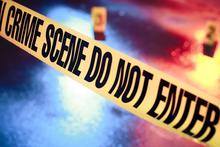
The Organization of Scientific Area Committees for Forensic Science (OSAC) has approved ISO/IEC 17020: Conformity Assessment—Requirements for the Operation of Various Types of Bodies Performing Inspection for inclusion on the OSAC Registry, a trusted repository of high-quality, science-based standards and guidelines for forensic practice.
The International Organization for Standardization and the International Electrotechnical Commission’s ISO/IEC 17020:2012 is an international accreditation standard used in many industries. Within forensic science, it applies to crime scene investigation units, medical examiner offices, and other entities that primarily collect and inspect evidence rather than performing analytical testing with instruments found in a traditional crime lab. Units accredited under 17020 would be expected to have documented standard operating procedures for detecting, collecting, and preserving different types of physical evidence.
Most crime laboratories are accredited under ISO/IEC 17025: General Requirements for the Competence of Testing and Calibration Laboratories, which was added to the OSAC Registry in September 2016. Posting both 17020 and 17025 on the OSAC Registry supports accreditation for a wider variety of forensic service providers.
“Ensuring that the guilty are convicted and the innocent are exonerated requires the highest possible quality in processing crime scenes and proper collection and preservation of evidence,” said Mark Stolorow, Director of OSAC. “This standard will help forensic investigators implement the highest quality practices.”
Jason Bond, executive secretary of the OSAC Quality Infrastructure Committee, said, “The addition of this standard to the OSAC Registry promotes accreditation and encourages its broader application in the forensic science field.”
OSAC, which is administered by the National Institute of Standards and Technology (NIST), facilitates the development of high-quality, science-based standards and guidelines for forensic practice. To be posted to the OSAC Registry, standards and guidelines must have been developed through a consensus-based process and must pass a review of technical merit by forensic practitioners, academic researchers, statisticians and measurement scientists.
For more information about OSAC, and to be notified of upcoming public comment periods, please sign up for our monthly newsletter.
Standards Developing Organization (SDO) News
This section describes SDO activities relevant to OSAC and the forensic science community.
ASTM Committee E30 on Forensic Sciences Recent Activity
E30.01 Criminalistics
The following work items are underway:
WK58322 Revision of E1459 - 13 Standard Guide for Physical Evidence Labeling and Related Documentation (LINK EXPIRED)
WK58457 New Practice for Training in the Forensic Examination of Gunshot Residue (GSR) using Scanning Electron Microscopy-Energy Dispersive X-ray Spectrometry (SEM-EDS)
The following ASTM standards were reapproved:
E1188-11(2017) Standard Practice for Collection and Preservation of Information and Physical Items by a Technical Investigator
E1492-11(2017) Standard Practice for Receiving, Documenting, Storing, and Retrieving Evidence in a Forensic Science Laboratory
Learn more about ASTM E30.
Status of Standards Documents Recommended for Inclusion on the OSAC Registry
The aim of OSAC is to identify and promote technically sound, consensus-based, fit-for-purpose documentary standards that are based on sound scientific principles. This will be achieved through the OSAC Registry. A standard or guideline that is posted on the Registry demonstrates that the methods it contains have been assessed to be valid by forensic practitioners, academic researchers, measurement scientists, and statisticians through a consensus development process that allows participation and comment from all relevant stakeholders.
Below is a listing of standards or guidelines that are under consideration for the OSAC Registry, along with their status in the approval process.
Standards Documents Open for Public Comment
The intent of the public comment period is to collect public opinion on inclusion of the standard to the OSAC Registry (OSAC is not soliciting potential revisions to the documents themselves.)
There is nothing available for Public Comment at this time.
Standards Documents in Public Comment Adjudication Phase
Public comment period is closed for the following standards/guidelines as OSAC units review and adjudicate comments received.
ASTM E2388-11 Standard Guide for Minimum Training Requirements for Forensic Document Examiners
This guide may not cover all aspects of training for the topics addressed or for unusual or uncommon examinations.
ASTM E2451-13 Standard Practice for Preserving Ignitable Liquids and Ignitable Liquid Residue Extracts from Fire Debris Samples
This practice describes procedures for preserving residues of ignitable liquids in extracts obtained from fire debris samples and questioned ignitable liquid samples.
Standards Documents at SAC for Vote
E2927-16 Standard Test Method for Determination of Trace Elements in Soda-Lime Glass Samples Using Laser Ablation Inductively Coupled Plasma Mass Spectrometry for Forensic Comparisons
This test method covers a procedure for the quantitative elemental analysis of the following seventeen elements: lithium (Li), magnesium (Mg), aluminum (Al), potassium (K), calcium (Ca), iron (Fe), titanium (Ti), manganese (Mn), rubidium (Rb), strontium (Sr), zirconium (Zr), barium (Ba), lanthanum (La), cerium (Ce), neodymium (Nd), hafnium (Hf) and lead (Pb) through the use of Laser Ablation Inductively Coupled Plasma Mass Spectrometry (LA-ICP-MS) for the forensic comparison of glass fragments.
E1588-17 Standard Practice for Gunshot Residue Analysis by Scanning Electron Microscopy/Energy Dispersive X-Ray Spectrometry
This practice covers the analysis of gunshot residue (GSR) by scanning electron microscopy/energy-dispersive X-ray spectrometry (SEM/EDS) using manual and automated methods.
Standards Documents at FSSB for Vote
ASTM E2330-12 Standard Test Method for Determination of Concentrations of Elements in Glass Samples Using Inductively Coupled Plasma Mass Spectrometry (ICP-MS) for Forensic Comparisons
One objective of a forensic glass examination is to compare glass samples to determine if they can be discriminated using their physical, optical or chemical properties (for example, color, refractive index (RI), density, elemental composition). If the samples are distinguishable in any of these observed and measured properties, it may be concluded that they did not originate from the same source of broken glass. If the samples are indistinguishable in all of these observed and measured properties, the possibility that they originated from the same source of glass cannot be eliminated. The use of an elemental analysis method such as inductively coupled plasma mass spectrometry yields high discrimination among sources of glass. This test method covers a procedure for quantitative determination of the concentrations of magnesium (Mg), aluminum (Al), iron (Fe), titanium (Ti), manganese (Mn), rubidium (Rb), strontium (Sr), zirconium (Zr), barium (Ba), lanthanum (La), cerium (Ce), neodymium (Nd), samarium (Sm), and lead (Pb) in glass samples.
Standards Documents in the Appeals Phase
The public appeals phase is open for the following standard. Appeals may only be submitted by individuals or groups that submitted a comment during the open public comment phase that believe their comment was not properly adjudicated. Submitted appeals must relate to the comment adjudication process, not technical issues.
ASTM E2926-17 Standard Test Method for Forensic Comparison of Glass Using Micro X-ray Fluorescence (µ-XRF) Spectrometry
This test method is for the determination of major, minor, and trace elements present in glass fragments. The elemental composition of a glass fragment can be measured through the use of μ-XRF analysis for comparisons of glass. This test method covers the application of μ-XRF using mono- and poly- capillary optics, and an energy dispersive X-ray detector (EDS).
On the Horizon
This section describes public and internal OSAC meetings that are on the horizon.

• (Internal OSAC Meeting) April 18-21, 2017 Full OSAC meeting (Leesburg, VA)
• (Internal OSAC Meeting) June 1-2, 2017 FSSB meeting (Frankfort, KY)
• (OSAC Presentations) August 6-12, 2017 at the Annual IAI International Forensic Educational Conference (Atlanta, GA)
• (Internal OSAC Meeting) Fall OSAC Meetings, September 25-29, 2017, location to be determined: SAC + Resource Committees, September 25-26; OLSS 2.0 Meeting (FSSB + 24 Subcommittee Chairs), September 27; FSSB Meeting, September 28-29

